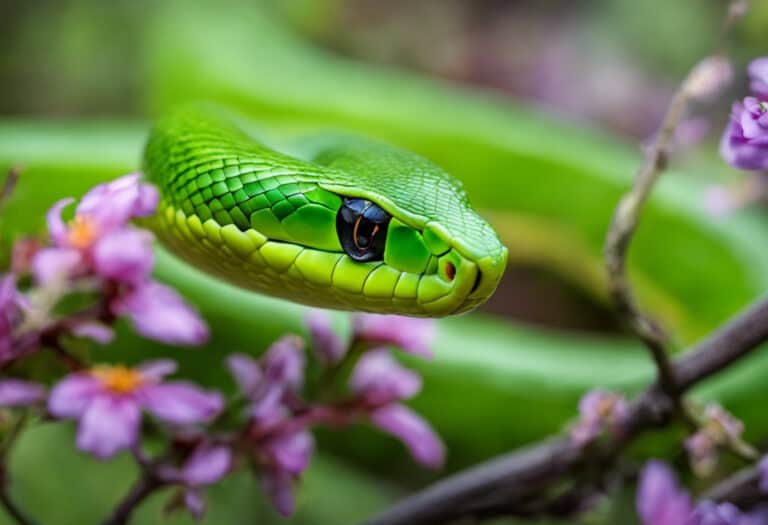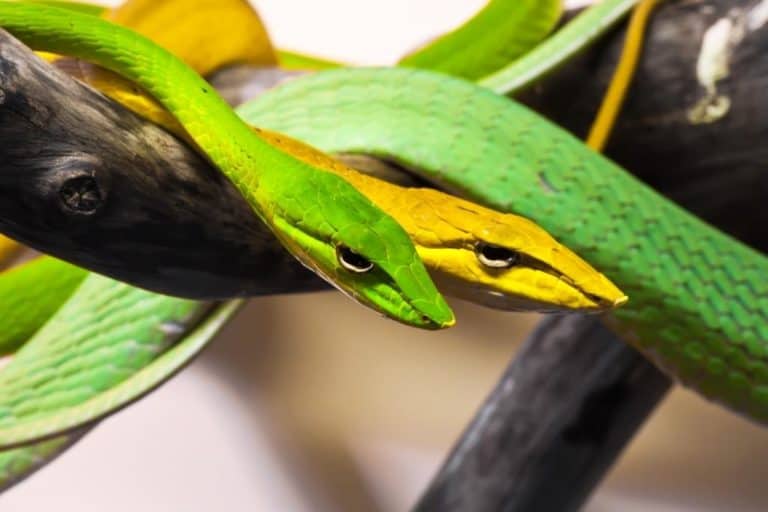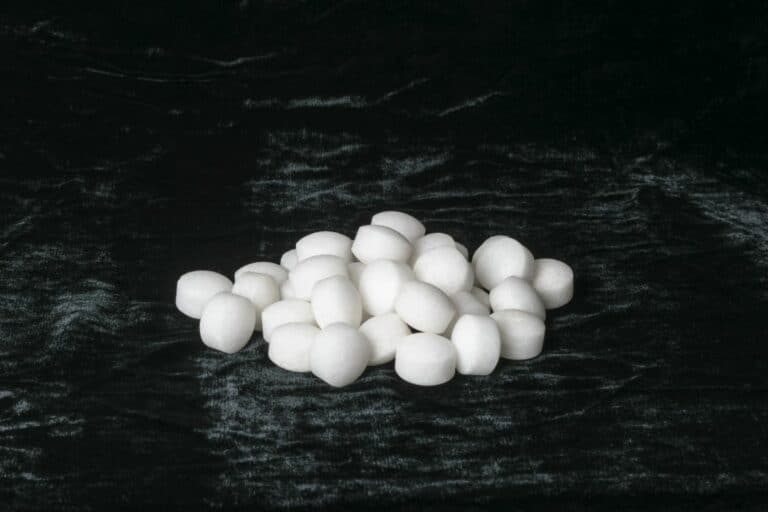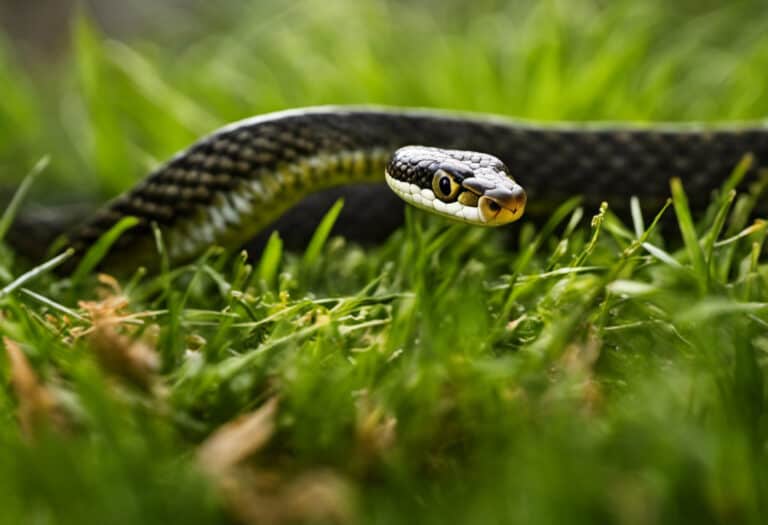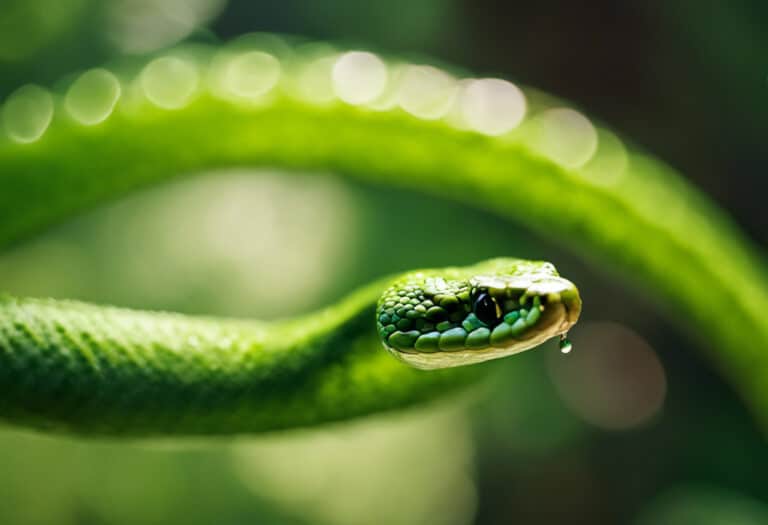Do Rat Snakes Eat Crickets?
Curious about the culinary preferences of rat snakes? Ever wondered if they have a hankering for crickets? This article dives into the dietary habits of both baby and adult rat snakes to determine if crickets are on their menu.
Baby rat snakes are voracious eaters, using their sharp teeth and keen hunting instincts to track down prey. While their food choices vary with age and size, crickets might just be one of their preferred meals.
Prepare to unravel the truth about rat snakes and their appetite for these hopping delicacies.
Key Takeaways
- Baby rat snakes have a varied diet, including small rodents, lizards, frogs, birds, and eggs.
- Baby rat snakes are constrictors and use their sharp teeth to subdue their prey.
- Baby rat snakes may eat crickets, worms, or frogs, depending on their preferences.
- Adult rat snakes primarily eat rodents but can also consume crickets if necessary.
Age and Size Factors: What Determines a Rat Snake’s Diet
As a baby rat snake, your diet is determined by your age and size. During this crucial stage of growth, your nutritional needs are of utmost importance. It’s essential to consume a balanced diet that provides the necessary nutrients for your development.
Baby rat snakes require a diet that’s rich in proteins to support their rapid growth. They primarily feed on small rodents like mice and shrews, as well as other prey such as lizards, frogs, birds, and eggs. As you grow, your diet may expand to include larger meals like mice or small birds.
Your adaptability allows you to feed on a variety of different foods, ensuring that you get the nutrition you need to thrive. Remember, a well-nourished baby rat snake will have the freedom to grow into a strong and healthy adult.
Versatile Predators: Exploring the Food Choices of Baby Rat Snakes
You may be surprised to learn that baby rat snakes are versatile predators with a wide range of food choices. These young snakes have a rapid growth rate, which means they’ve high nutritional requirements to support their development.
Baby rat snakes primarily feed on small rodents like mice and shrews. However, they aren’t limited to just rodents. They also consume lizards, frogs, birds, and even eggs. As constrictors, baby rat snakes wrap their bodies around their prey and use their sharp teeth to subdue it.
These young snakes have a voracious appetite and need to eat more often than adults to fuel their growth. So, don’t be surprised if you see a baby rat snake hunting and devouring a variety of prey in its quest for nourishment.
Constrictors in Action: How Baby Rat Snakes Capture and Subdue Prey
When hunting, baby rat snakes use their bodies to wrap around their prey and their sharp teeth to subdue it. They’ve developed unique hunting techniques that allow them to successfully capture and consume their desired meal. Here are some key aspects of their hunting behavior:
- Baby rat snakes are skilled constrictors, using their bodies to tightly coil around their prey, restricting their movement and preventing escape.
- Their sharp teeth play a crucial role in subduing their prey, allowing them to deliver a venomous bite that immobilizes their target.
- The size of the prey plays a significant role in the rat snake’s diet selection. Younger snakes may opt for smaller prey like insects or small rodents, while larger snakes can consume larger prey such as birds or rodents.
- Rat snakes are adaptable hunters, capable of adjusting their hunting techniques based on the size and availability of their prey.
- The hunting techniques of baby rat snakes demonstrate their independence and freedom as they navigate their environment in search of sustenance.
The Importance of Nutrition: Understanding the Feeding Habits of Baby Rat Snakes
Understanding the feeding habits of baby rat snakes is crucial for their overall health and development. Proper nutrition is essential to ensure they receive the necessary nutrients for growth. By studying their diet and feeding preferences, we can gain valuable insights into their natural behavior and make informed decisions about their diet.
This includes whether or not they eat crickets.
Baby Rat Snake Diet
Baby rat snakes, depending on their age and size, may be interested in a diet consisting of small prey like crickets, worms, or frogs. These tiny predators have specific nutritional needs to support their growth and development. Understanding their dietary requirements is crucial for their survival.
Here are some key points to consider:
- Baby rat snakes primarily feed on small rodents like mice and shrews. They may also consume lizards, frogs, birds, and eggs.
- Being constrictors, baby snakes use their sharp teeth and strong bodies to subdue and kill their prey.
- These young snakes have a higher feeding frequency compared to adults to fuel their rapid growth.
- While many experts believe that baby rat snakes do eat crickets, their preference may vary. Observing their natural feeding habits can provide valuable insight.
- It’s a misconception that baby rat snakes are too small to consume crickets. They’re capable of catching and consuming smaller prey with assistance or on their own.
Overall, baby rat snakes have the freedom to explore a diverse range of food options, ensuring they receive the necessary nutrition for their optimal growth and development.
Do They Eat Crickets?
If you’re curious about their diet, it’s worth noting that baby rat snakes have been observed consuming crickets. When it comes to their insect diet, crickets offer several benefits to baby rat snakes.
Firstly, crickets are a readily available food source, making it easier for young snakes to find and catch their prey. Additionally, crickets provide a good source of protein and essential nutrients that aid in the growth and development of baby rat snakes. These small insects are also easier for baby snakes to consume, as they’re smaller in size compared to larger prey like mice or birds.
However, it’s important to note that while crickets are a suitable food option for baby rat snakes, their diet may vary depending on their individual preferences and the availability of other prey items in their environment.
Debunking Myths: Can Baby Rat Snakes Actually Eat Crickets
Can baby rat snakes actually eat crickets?
Contrary to popular belief, baby rat snakes are capable of consuming crickets as part of their diet. While they may prefer smaller prey, such as worms or frogs, many studies have shown that crickets are a viable food source for young rat snakes.
Baby Rat Snakes’ Diet: Crickets or Not
You may be surprised to learn that baby rat snakes are known to include crickets in their diet. These young snakes have specific age and diet restrictions that are crucial for their nutritional needs and growth. Here are some key points to consider:
- Baby rat snakes have a diverse appetite, and their diet evolves as they grow.
- They start by feeding on smaller prey like crickets, worms, or frogs.
- As they mature, their diet expands to include larger meals like mice, shrews, and even birds.
- Baby rat snakes are adaptable and can adjust their diet based on the availability of prey in their environment.
- The frequency of their meals is higher compared to adult snakes, as they need more energy to support their rapid growth.
Understanding the dietary habits of baby rat snakes, including their preference for crickets, is essential for their overall well-being and development.
Do Young Rat Snakes Eat Crickets?
Young rat snakes include crickets in their diet, which serves as a smaller prey option for their voracious appetite. These young snakes have specific nutritional needs that must be met for their growth and development. Baby rat snakes require a diet that’s high in protein and calcium to support their rapid growth.
Crickets provide an excellent source of protein and are easily available in the wild. They’re also a convenient prey option for baby snakes due to their smaller size. While baby rat snakes may eventually transition to larger prey like mice or small birds, crickets play a vital role in their early feeding habits.
Alternative Options: Other Prey Preferences of Baby Rat Snakes
If you’re considering feeding baby rat snakes, it’s important to know that they may have preferences for other prey options besides crickets, such as worms or frogs. Baby rat snakes are opportunistic feeders and can adapt to a variety of foods. They possess a keen sense of smell and can track down their prey with precision.
When it comes to their diet, baby rat snakes primarily consume small rodents like mice and shrews. However, they aren’t limited to rodents and may also eat lizards, frogs, birds, and even eggs. These young snakes are constrictors, using their bodies to subdue their prey, and have sharp teeth to help them in the process.
As they’re growing rapidly, baby rat snakes require frequent meals to fuel their development. So, while they may eat crickets, they’re also open to other prey options.
Observing Nature: Studying Wild Rat Snakes’ Feeding Habits
To understand the feeding habits of wild rat snakes, simply observe their choice of prey in their natural habitat.
Studying the behavior of these snakes and their impact on the ecosystem is crucial to understanding their role in the environment.
The table below provides a glimpse into the diverse diet of wild rat snakes:
| Prey | Description | Impact on Ecosystem |
|---|---|---|
| Small rodents | Mice, shrews | Control rodent population, maintain balance |
| Lizards | Small reptiles | Control insect population |
| Frogs | Amphibians | Control insect population, serve as prey for larger animals |
| Birds | Small avian species | Control insect population, disperse seeds |
| Eggs | Bird, reptile eggs | Control population of certain species, nutrient recycling |
As you can see, rat snakes play an important role in maintaining the balance of the ecosystem by controlling the population of various prey species.
Studying their feeding habits allows us to better understand their impact on the environment and the delicate web of life they are a part of.
Backyard Visitors: Spotting Baby Rat Snakes Hunting for Crickets
You may spot baby rat snakes in your backyard hunting for crickets as their preferred prey. These fascinating creatures have adapted to urban areas, where they’ve to navigate the impact of human activity on their diet. As you observe these baby rat snakes in action, consider the following:
- Human development has encroached on their natural habitat, forcing them to adapt to new food sources.
- The reduction of natural prey, such as rodents, due to human interventions, makes crickets an attractive alternative for baby rat snakes.
- Changes in landscaping practices, such as the use of pesticides, can affect the availability of suitable prey for these snakes.
- Providing shelter and food sources, like crickets, in your backyard can help support the survival of these urban-dwelling baby rat snakes.
- By understanding and appreciating these resilient creatures, you contribute to the preservation of biodiversity in urban environments.
Adults on a Different Diet: Contrasting the Feeding Patterns of Adult Rat Snakes
Now let’s turn our attention to the adults in the room – the adult rat snakes, that is.
These magnificent creatures have a different diet compared to their younger counterparts. While baby rat snakes may enjoy the occasional cricket, adult rat snakes have more refined tastes. Their feeding patterns are centered around consuming small rodents such as mice and rats, and they may even indulge in the occasional bird or bird egg.
In captivity, adult rat snakes can be fed live crickets or other insects as a supplementary part of their diet. However, it’s important to note that adult rat snakes prefer larger prey and may not rely heavily on crickets alone.
If you’re considering changing the diet of your adult rat snake, it’s always best to consult with a reptile specialist to ensure their nutritional needs are met.
Frequently Asked Questions
Can Baby Rat Snakes Eat Fruits or Vegetables?
Baby rat snakes have specific dietary needs and are primarily carnivorous. Fruits and vegetables are not suitable for their diet. Feeding them nuts or seeds can potentially lead to health risks. Stick to their natural prey like rodents and small birds.
Do Baby Rat Snakes Eat Insects Other Than Crickets, Such as Ants or Beetles?
Baby rat snakes have a diverse diet that includes insects like ants and beetles. These small creatures are a tasty snack for hungry baby snakes. They may prefer crickets, but they’re open to other options too.
What Is the Average Number of Times a Day Do Baby Rat Snakes Eat?
On average, baby rat snakes eat multiple times a day to fuel their growth. There are common misconceptions about feeding them, but understanding their feeding schedule is crucial for their well-being.
Can Baby Rat Snakes Eat Prey That Is Larger Than Themselves?
Baby rat snakes can eat prey larger than themselves, but they typically prefer smaller prey. Observing their feeding habits in the wild gives insight into their diet. Nutritional needs during growth include a variety of foods.
Are There Any Specific Types of Crickets That Baby Rat Snakes Prefer to Eat?
Baby rat snakes do eat crickets. They prefer smaller prey, and crickets provide nutritional benefits. To feed them, offer live or pre-killed crickets using tweezers or tongs. Ensure proper size and monitor intake for a healthy diet.
Conclusion
In conclusion, after exploring the dietary habits of baby rat snakes and adult rat snakes, it’s clear that these versatile predators have a wide range of food choices. While baby rat snakes may show interest in smaller prey like crickets, their diet can vary depending on their age and size.
It’s important to observe their feeding habits in the wild or in our own backyards to gain a deeper understanding of their nutrition needs. By debunking myths and studying their natural behavior, we can continue to unravel the fascinating world of rat snakes and their appetite for crickets.
